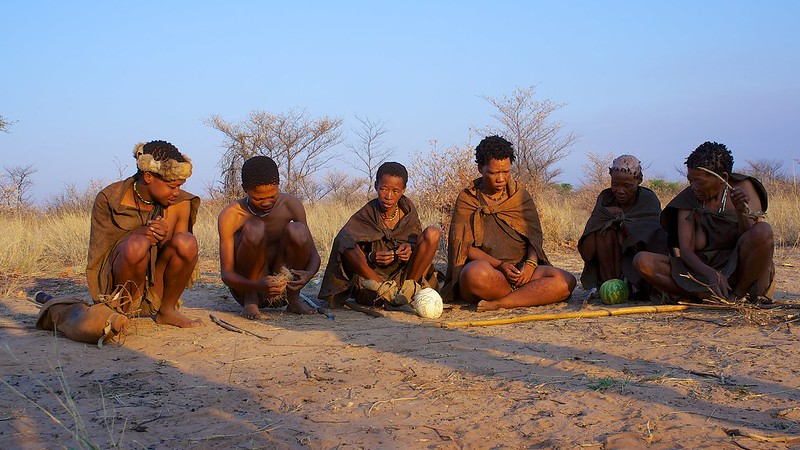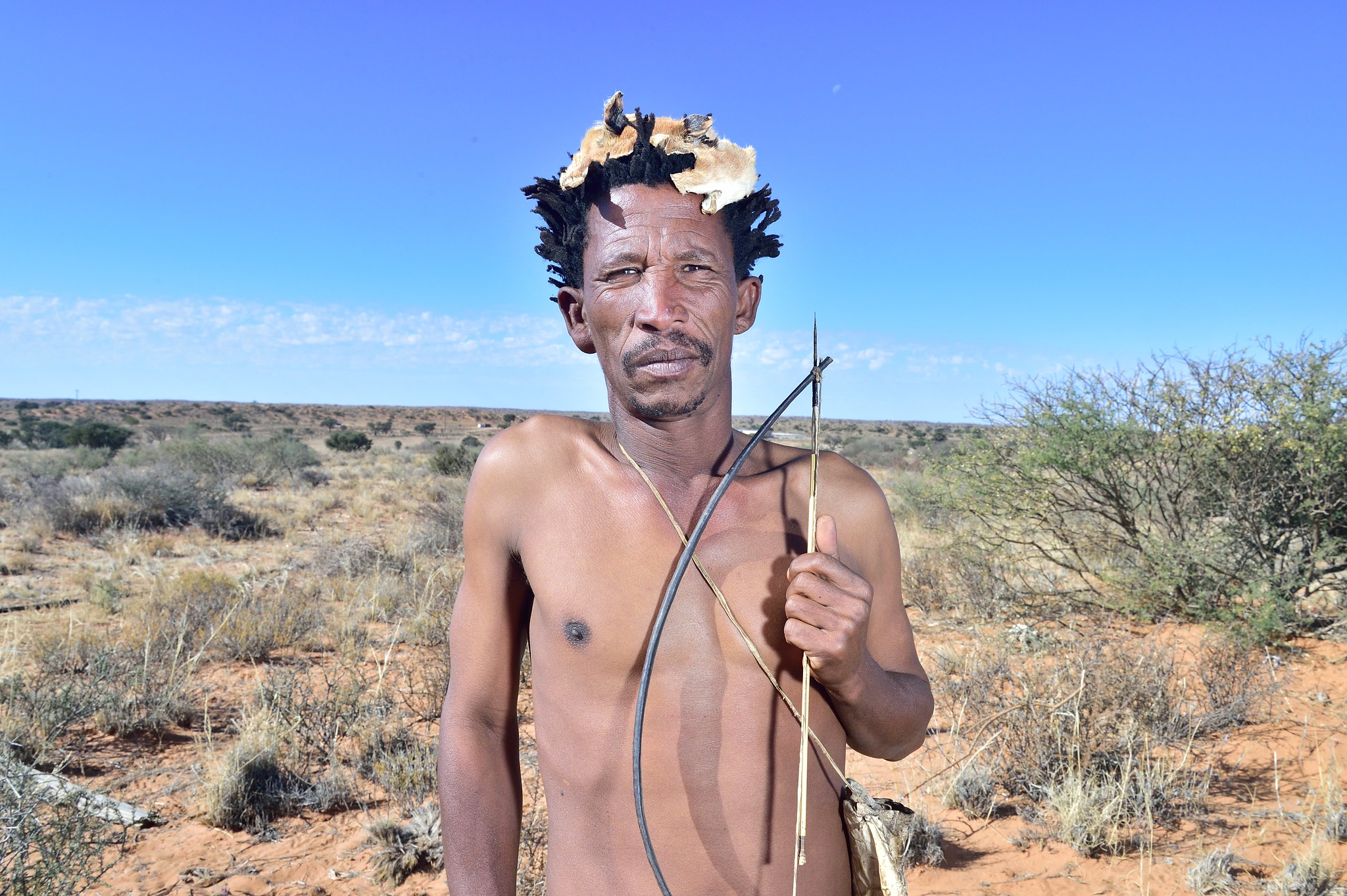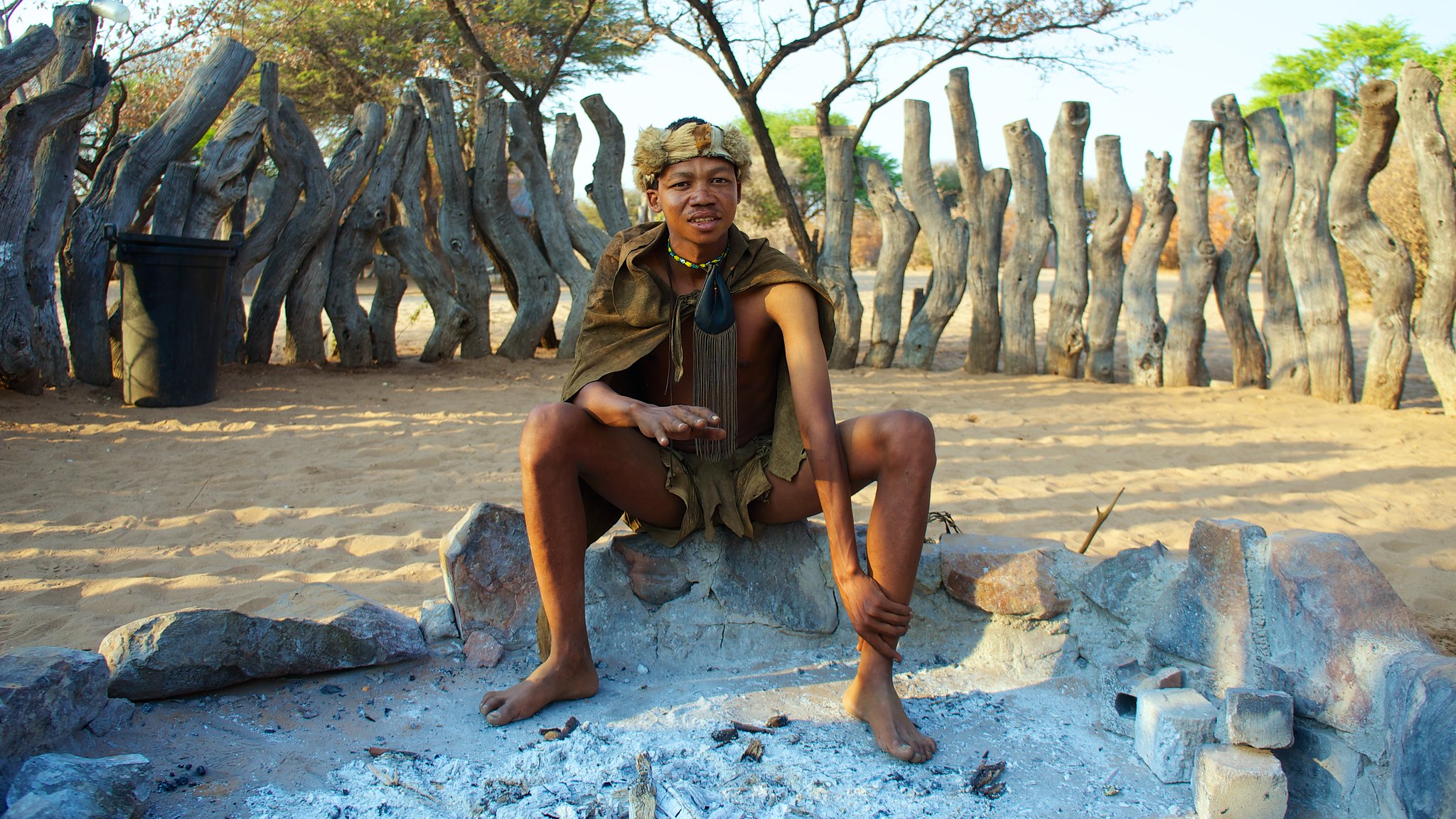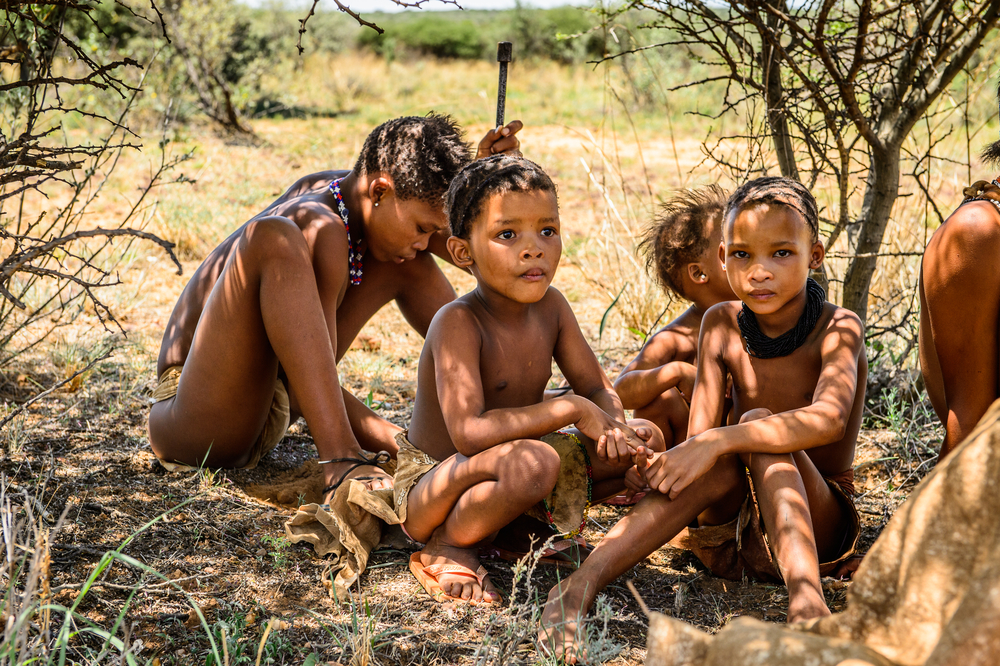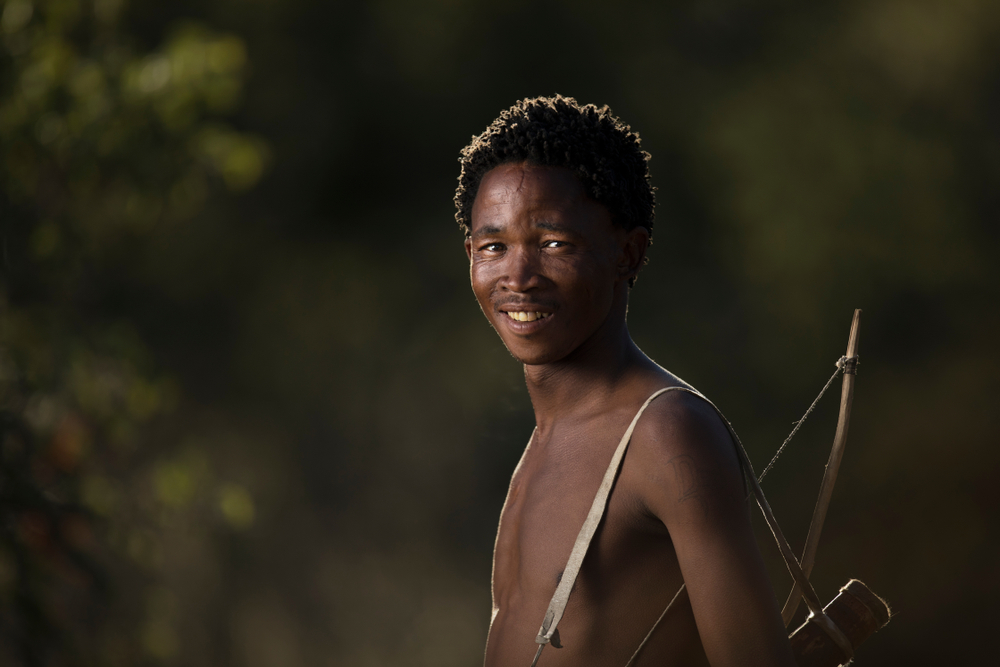The San People of South Africa
The San peoples are the original inhabitants of Southern Africa. They are among the oldest tribes on Earth, and are direct descendants of the first humans to occupy southern Africa.
Although their way of life has been greatly changed due to colonialism, the tribe still fights today to continue their isolated, nomadic lifestyle.
Find out how they managed to survive for thousands of years without modern civilization.
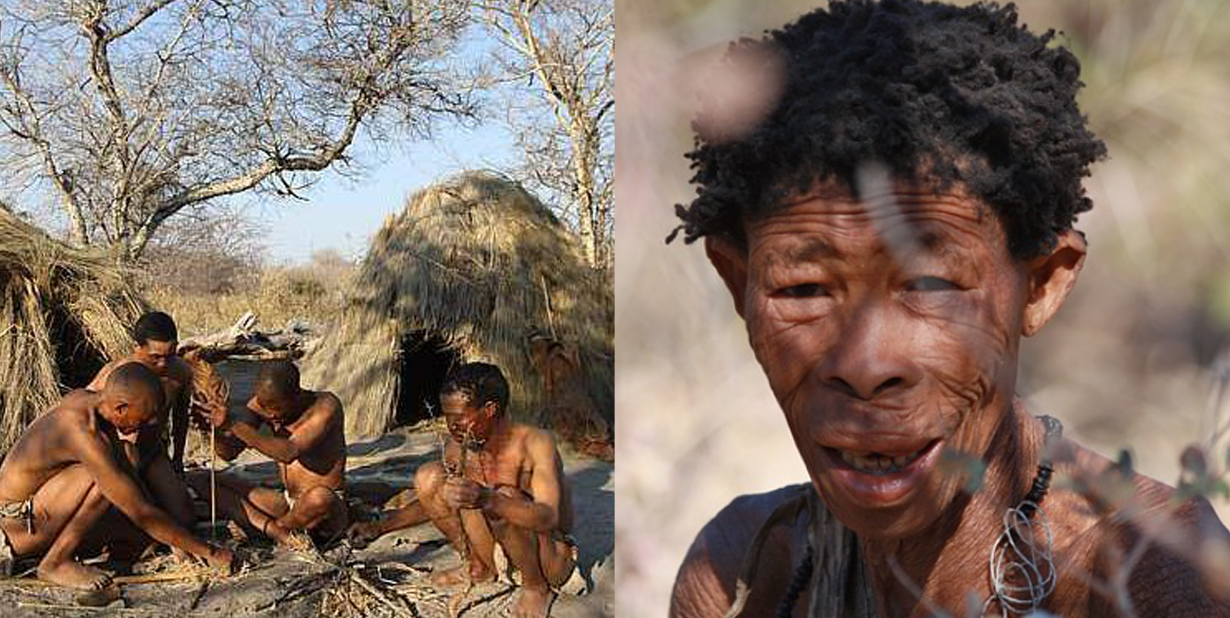
Location
The San peoples are members of an indigenous culture of southern Africa, and the oldest surviving cultures of the region.
Their ancestral territories span Botswana, Namibia, Angola, Zambia, Zimbabwe, Lesotho and South Africa.
 Ian Beatty, CC BY-SA 2.0, Wikimedia Commons
Ian Beatty, CC BY-SA 2.0, Wikimedia Commons
Population
It is estimated that there are currently approximately 100,000 San people alive today.
Batswana is said to be the country with the highest proportion of San people, with about 63,500 in 2017.
 Mopane Game Safaris, CC BY-SA 4.0, Wikimedia Commons
Mopane Game Safaris, CC BY-SA 4.0, Wikimedia Commons
Groups
There are several different mobile groups among the San people, and they do have different group names. Most groups are comprised of around 25 individuals, including men, women and children.
The groups each own a spot of land, where they live and hunt. They meet up with other groups for special occasions.
 sjorford, CC BY-SA 2.0, Wikimedia Commons
sjorford, CC BY-SA 2.0, Wikimedia Commons
Language
Very little is known about the dialects of the San people, as most of these ancient languages were never recorded.
However, it is said that San ancestors spoke languages of the Khoe, Tuu and Kxʼa language families. Many of the San people adopted the unique click sounds of the Khoisan language as dialects changed over the years.
Sustenance
The San people are hunter-gatherers.
They eat anything available, both animal and vegetable. This includes, antelope, zebra, porcupine, wild hare, lion, giraffe, fish, insects, tortoise, flying ants, snakes, hyena, eggs and wild honey.
The meat is boiled or roasted on a fire.
 Andy Maano, CC BY-SA 4.0, Wikimedia Commons
Andy Maano, CC BY-SA 4.0, Wikimedia Commons
Hunting
The San hunt and trap their food using bows and arrows. But the animal’s lives are not ended right away. A lethal poison is used which slowly causes their demise.
Small antelope may take a couple hours, but larger antelope can take 7 to 12 hours to pass. For large game, like a giraffe it could take up to 3 days for the animal to pass.
 Frank Vassen, CC BY 2.0, Wikimedia Commons
Frank Vassen, CC BY 2.0, Wikimedia Commons
Hunting: Poison
The most common poison used for hunting is made from the larvae of a small beetle. But they will also use poison from plants, and snake venom.
The poison is boiled repeatedly until it looks like red currant jelly. It is then cooled and smeared onto the arrows.
Hunting: Poison
The poison is highly toxic and the San fear it themselves. They are very careful with the preparation of the poison and the arrows, smearing the red goop just below the point to avoid fatal accidents.
Hunting: Poison
The poison is neuro toxic, so it does not contaminate the whole animal. The spot where the arrow strikes is cut away and not used, but the rest of the meat is good to eat.
Trapping Large Game
The San are very intelligent trappers. They dig pits near larger rivers where game go to drink. The pits are large and deep, narrowing like a funnel towards the bottom. In the center of the pit is a sharp stake.
They cover the pits with leaves to hide them. When an animal walks over the pit, they fall onto the stake.
 David Barrie, CC BY 2.0, Wikimedia Commons
David Barrie, CC BY 2.0, Wikimedia Commons
Trapping Small Game
When trapping smaller animals such as hares and guinea fowls, traps are made using twisted gut fiber from plants. The fiber is made into a noose that traps the animal when it steps into the snare.
 Andy Maano, CC BY-SA 4.0 , Wikimedia Commons
Andy Maano, CC BY-SA 4.0 , Wikimedia Commons
Capturing Prey
Another intriguing way the San people capture their pray is through the use of Aardvark holes.
Aardvark holes are used by small buck as a rest place to escape the hot sun. The hunter will wait quietly behind the hole until the animal leaves, and then they firmly pin the animal down and hit it on the head with a Kerrie (club).
 Louise Joubert, CC BY-SA 3.0, Wikimedia Commons
Louise Joubert, CC BY-SA 3.0, Wikimedia Commons
Tracking Prey
The San are intelligent trackers and know the habits of their prey. When they discover where a herd has gathered, they will test the direction of the wind by throwing a handful of dust in the air.
This helps determine the herds next moves.
Processing Meat
The San are not wasteful. They use every part of the animal. Every bit of meat is consumed, including all organs.
The hides are tanned for blankets and clothing, and the bones are cracked for the marrow.
Distributing the Meat
The man who got the animal has the right to distribute the meat to the tribe.
Usually, visitors from other bands of the tribe will hear about the harvest and join to share in the feast. This is common for large game harvests, and it is expected that they return the favor when they harvest a large animal as well.
Gathering
The San make use of over 100 edible species of plant. The men are the hunters, and the women are the gatherers. They forage for mushrooms, bulbs, berries and melons.
Plant foods gathered by women are not shared among the tribe. They are only her immediate family.
Governing the Tribe
Most ancestral tribes have chiefs or leaders or some sort, but not the San.
They have no formal authority figure. They govern themselves by group consensus. Their conflicts are solved by simply talking it out with each other.
Leadership
Some individuals assume a leadership role within certain areas of expertise, like hunting or healing rituals, but they are nothing more than that. They cannot achieve any sort of influencing power.
Most “leaders” are those who have lived within the group for a long time, have reached a respectable age, and have good character.
 South African Tourism, CC BY 2.0, Wikimedia Commons
South African Tourism, CC BY 2.0, Wikimedia Commons
Land Ownership
Land is typically owned by a group, and it is inherited together. Group members maintain their membership within the group by simply living on the land that the group owns.
Groups must hunt on their own land, or get permission from other groups to hunt on their land.
Marriage
The majority of marriages are monogamous. But if a man was a good hunter and was able to obtain enough food, he could “afford” to have another wife as well.
First marriages are arranged by the parents after consulting with senior members of the group.
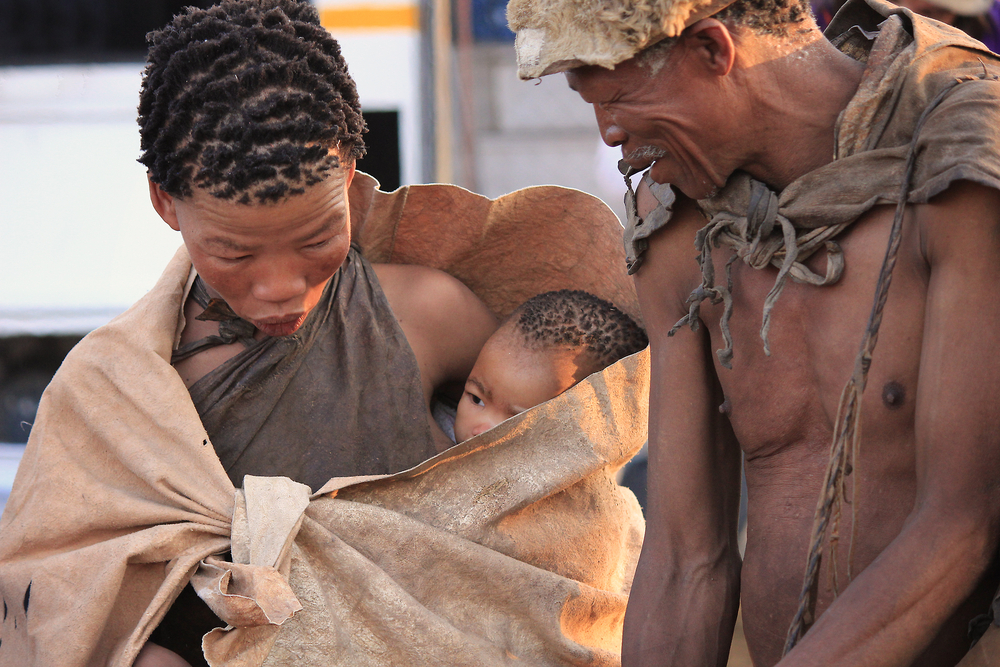 Rickson Davi Liebano, Shutterstock
Rickson Davi Liebano, Shutterstock
Marriage Differs by Group
Marriage prospects differ among the groups, but for the most part, the San marry their relatives.
Some groups prefer bilateral-cousin marriages, excluding first cousins. Other groups prefer cross-cousin marriage, including first cousins. And some only allow marriage to more distant relatives.
Pre-marital Arrangements
Back in the day, bride-service was required prior to marriage. This means, the man would have to perform some sort of service for the bride’s family prior to being allowed to married her.
Today, a dowry is more common, usually in the form of livestock.
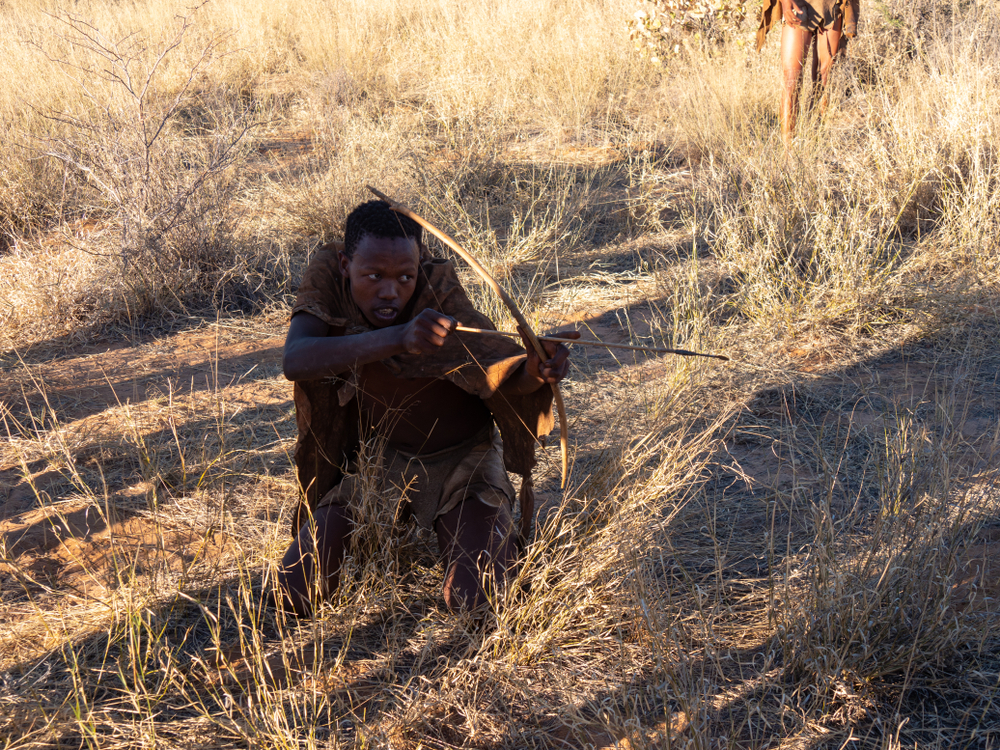 Matt Starling Photography, Shutterstock
Matt Starling Photography, Shutterstock
Post-Martial Living Arrangements
Some groups prefer they live with the husband’s group, if the couple are related from the mother’s side—and vice versa.
Other groups prefer they live with the wife’s group.
Divorce
San people do practice divorce, but it is mostly only common before a child is born to the couple. Once a child is born, the couple focus on building their strong family unit.
 LawrenceTsaoneBahiti, Shutterstock
LawrenceTsaoneBahiti, Shutterstock
Children: Birth & Naming
When a San child is born, they are named after a grandparent or another relative, but never the parents. There are very few names that circulate among the San, with approximately 35 names per gender.
 Rickson Davi Liebano, Shutterstock
Rickson Davi Liebano, Shutterstock
Children: Social Duties
San children do not have any social duties. They are expected to play, as leisure is very important to San of all ages. They spend a lot of time talking, joking, making music, and dancing.
Children have no expectations until they reach puberty.
Children: Discipline
Given that children have minimal expectations, they do not often need to be disciplined. However, in some cases, corporal punishment is applied and ridicule is used.
Housing: Materials
The San live in temporary huts, or caves under rocky overhangs. Shelters were made using materials found around the area they lived, such as branches, grass, and rocks.
Housing: Family Living Arrangements
Each family has its own hut. Teenage children often build their own small huts next to their parents. In a polygynous family, the wives have their own huts.
Families typically prefer to live in homesteads that include other members of their extended family.
Clothing
The San’s ancestral clothing was very simple, and minimal. It was made using materials from the animals they hunted.
Children sometimes wore beads, and the men sometimes wore short leather pants. Women wore leather cloaks from the whole skin of an antelope.
Belief System
The San belief system, in general, includes one powerful god, while also recognizing the presence of lesser gods along with their wives and children.
The spirits of the deceased are highly respected.
Spirituality
Some groups believed in a spirit called /Kaggen, a trickster god who manifests as many things—most notably a praying mantis. He also turns into an Eland, a hare, a snack or a vulture.
When he is not one of his animal forms, he lives his life as an ordinary San.
 Schnobby, CC BY-SA 3.0, Wikimedia Commons
Schnobby, CC BY-SA 3.0, Wikimedia Commons
Rituals: The Eland
The Eland (spiral horned antelope) is their spirit animal and is included in four main rituals:
- A boy’s first animal harvest
- Girl’s puberty
- Marriage
- Trance Dance
 Dietmar Rauscher, Shutterstock
Dietmar Rauscher, Shutterstock
Rituals: A Boy’s First Harvest
When a boy reaches puberty, a ritual is held where the boy is told how to track and Eland and how the Eland will fall once shot with an arrow.
Once the boy successfully gets his first large Eland, he is considered an adult.
Rituals: Girl’s Puberty
Once a girl experiences her first menstrual cycle she is isolated to her hut. The other women of the tribe then do the Eland Bull Dance where they dance around like the animal. A man will wear Eland horns and play the part of a bull.
This ritual is said to keep the girl beautiful, peaceful, and free from hunger and thirst.
Rituals: Marriage
One of the marriage rituals involves the groom giving the fat from the Elands’ heart to the bride’s parents.
The bride is also smeared with Eland fat during another stage of the ceremony.
Rituals: Trance Dance
During the Trance Dance, the Eland is considered the most potent of all animals, and the Shamans (medicine man) want to possess the potency.
 LawrenceTsaoneBahiti, Shutterstock
LawrenceTsaoneBahiti, Shutterstock
European Settlers
In the mid-17th century, European settlers arrived and immediately went to battle with the San and other tribes who were now living in the area.
But the San were at a great disadvantage.
 Internet Archive Book Images, Wikimedia Commons
Internet Archive Book Images, Wikimedia Commons
Slavery
Unlike the San, the Europeans owned horses and firearms. They also had a much larger population. The San didn’t stand a chance. They fought to their demise.
Many of the San would even end their own lives to avoid being captured where they would be forced into slavery.
Colonialism
The Europeans took over their land and destroyed the San’s migratory way of life.
They were no longer allowed to roam freely, and trophy hunters wiped out the vast herd of game—taking away their principal supply of food.
Mass Destruction
Settlers from all over followed the Europeans and it wasn’t long before the San communities were brutally destroyed.
Their homesteads were torn down and the San were enslaved.
 New York Public Library, Picryl
New York Public Library, Picryl
Enslavement to Marriage
Many of the San were enslaved by Black farmers, who forced the women to marry them. Their entire way of life was changed.
The intermarriage slowly destroyed the social identity of the San people, along with their bloodlines.
Life of San Today
Today, the San’s traditional way of life is considered “primitive” and they are forced to live like the majority of cattle-herding tribes that now occupy their land.
For the San who do not comply, life is very hard.
 DevonJenkin Photography, Shutterstock
DevonJenkin Photography, Shutterstock
Bottom of the Social Scale
San who do not comply with modern standards are forced to live in poverty, at the bottom of the social scale. Many suffer from alcoholism, violence, disease and despair.
The Last of the Hunter-Gatherers
Few modern San are able to continue as hunter-gatherers in small groups, but they spend a great deal of time avoiding forced compliance.
Many of them were forcibly evicted from the Central Kalahari Game Reserve in 2022, by the Batswana government so they could establish diamond mines.
The “Reason”
The government’s reason for forced colonialism was to provide the San with services such as schools and hospitals, and bring them into modern society where they will benefit from all that is has to offer.
However, very few of this actually happened and most of the San today live in encampments in hostile environments.
 Mopane Game Safaris, CC BY-SA 4.0, Wikimedia Commons
Mopane Game Safaris, CC BY-SA 4.0, Wikimedia Commons
Peaceful People
The San are a friendly and peaceful group of people. They never made weapons of war, and they lived in harmony with their natural environment for at least 30,000 years.
Today, they have been forced to adapt to modern society, adopting strategies for political, economic and social survival.
Extinction
Since colonialism, the San bloodlines are thinning out as they marry other races, and discontinue their traditional lifestyles. They may soon cease to exist as a separate people.
It won’t be long until their culture and traditions can only be viewed in museums and history books.
Final Thoughts
As direct descendants of the first humans of southern Africa, it is unfortunate that colonialism has nearly wiped out their traditional way of life.
After thousands of years maintaining their cultural traditions, it is imperative that modern society fights along with them to preserve their historical significance.
Many modernized San today continue to fight for their land rights back, in hopes that future generations can revert back to their hunter-gatherer, peaceful lifestyle.
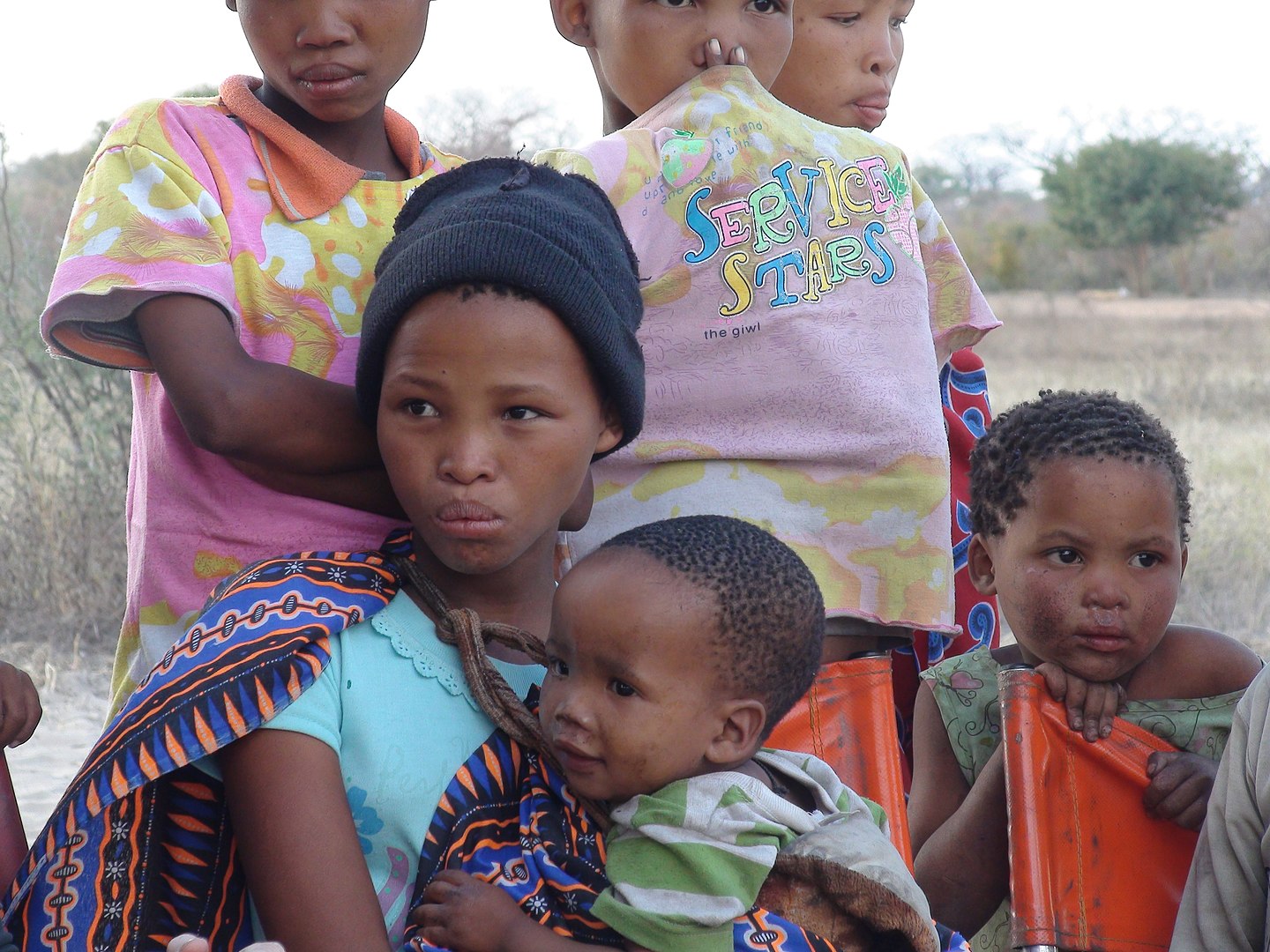 Nicolas M. Perrault, Wikimedia Commons
Nicolas M. Perrault, Wikimedia Commons




